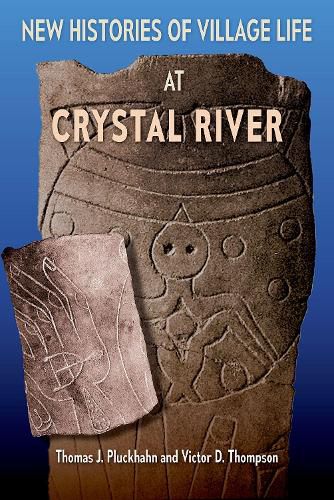Readings Newsletter
Become a Readings Member to make your shopping experience even easier.
Sign in or sign up for free!
You’re not far away from qualifying for FREE standard shipping within Australia
You’ve qualified for FREE standard shipping within Australia
The cart is loading…






This title is printed to order. This book may have been self-published. If so, we cannot guarantee the quality of the content. In the main most books will have gone through the editing process however some may not. We therefore suggest that you be aware of this before ordering this book. If in doubt check either the author or publisher’s details as we are unable to accept any returns unless they are faulty. Please contact us if you have any questions.
This volume explores how native peoples of the Southeastern United States cooperated to form large and permanent early villages, using the site of Crystal River on Florida’s Gulf Coast as a case study.
Crystal River was once among the most celebrated sites of the Woodland period (ca. 1000 B.C. to A.D. 1000), consisting of ten mounds and large numbers of diverse artifacts from the Hopewell culture. But a lack of research using contemporary methods at this site and nearby Roberts Island limited a full understanding of what these sites could tell scholars. Thomas Pluckhahn and Victor Thompson reanalyze previous excavations and conduct new field investigations to tell the whole story of Crystal River from its beginnings as a ceremonial center, through its growth into a large village, to its decline at the turn of the first millennium while Roberts Island and other nearby areas thrived.
Comparing this community to similar sites on the Gulf Coast and in other areas of the world, Pluckhahn and Thompson argue that Crystal River is an example of an
early village society.
They illustrate that these early villages present important evidence in a larger debate regarding the role of competition versus cooperation in the development of human societies.
$9.00 standard shipping within Australia
FREE standard shipping within Australia for orders over $100.00
Express & International shipping calculated at checkout
This title is printed to order. This book may have been self-published. If so, we cannot guarantee the quality of the content. In the main most books will have gone through the editing process however some may not. We therefore suggest that you be aware of this before ordering this book. If in doubt check either the author or publisher’s details as we are unable to accept any returns unless they are faulty. Please contact us if you have any questions.
This volume explores how native peoples of the Southeastern United States cooperated to form large and permanent early villages, using the site of Crystal River on Florida’s Gulf Coast as a case study.
Crystal River was once among the most celebrated sites of the Woodland period (ca. 1000 B.C. to A.D. 1000), consisting of ten mounds and large numbers of diverse artifacts from the Hopewell culture. But a lack of research using contemporary methods at this site and nearby Roberts Island limited a full understanding of what these sites could tell scholars. Thomas Pluckhahn and Victor Thompson reanalyze previous excavations and conduct new field investigations to tell the whole story of Crystal River from its beginnings as a ceremonial center, through its growth into a large village, to its decline at the turn of the first millennium while Roberts Island and other nearby areas thrived.
Comparing this community to similar sites on the Gulf Coast and in other areas of the world, Pluckhahn and Thompson argue that Crystal River is an example of an
early village society.
They illustrate that these early villages present important evidence in a larger debate regarding the role of competition versus cooperation in the development of human societies.